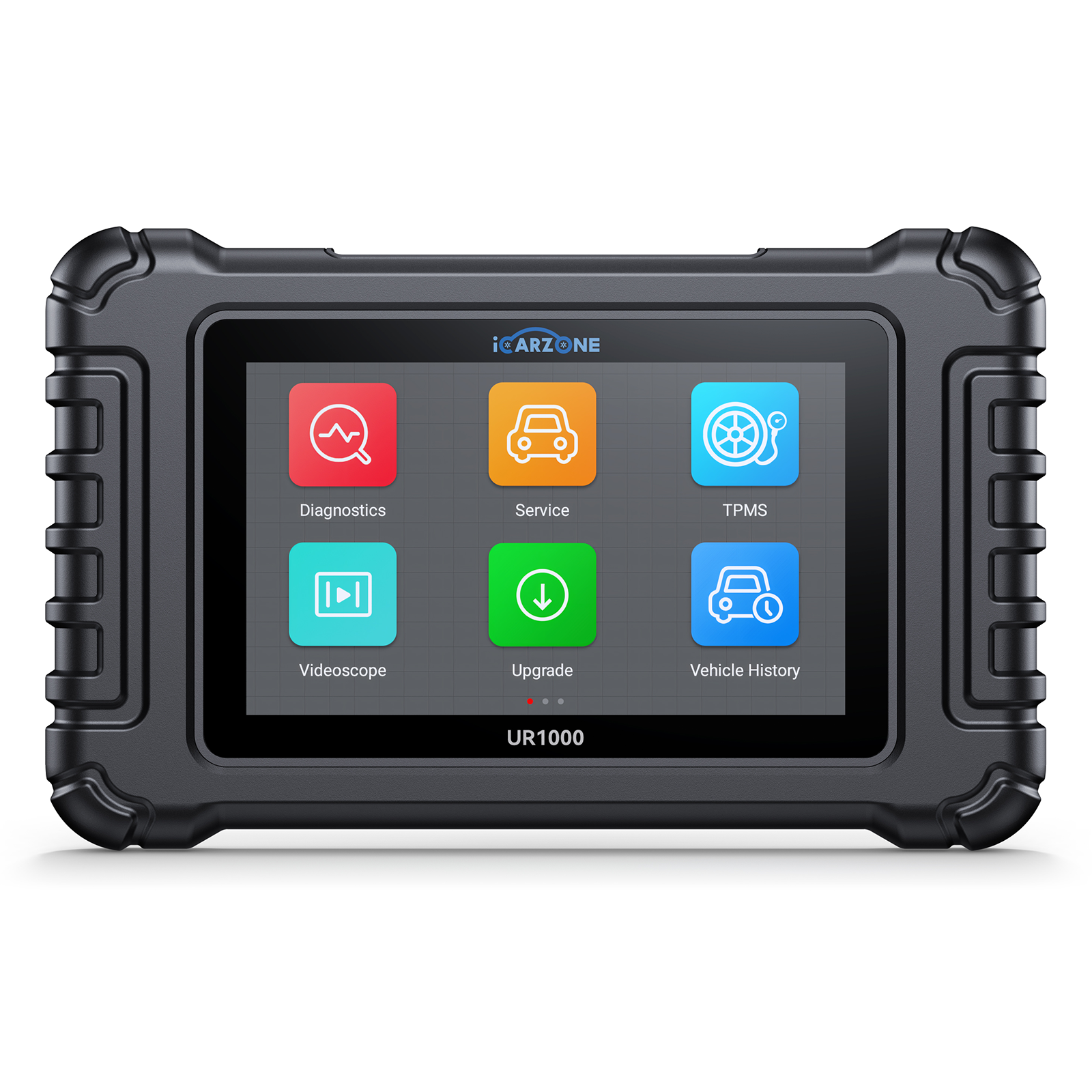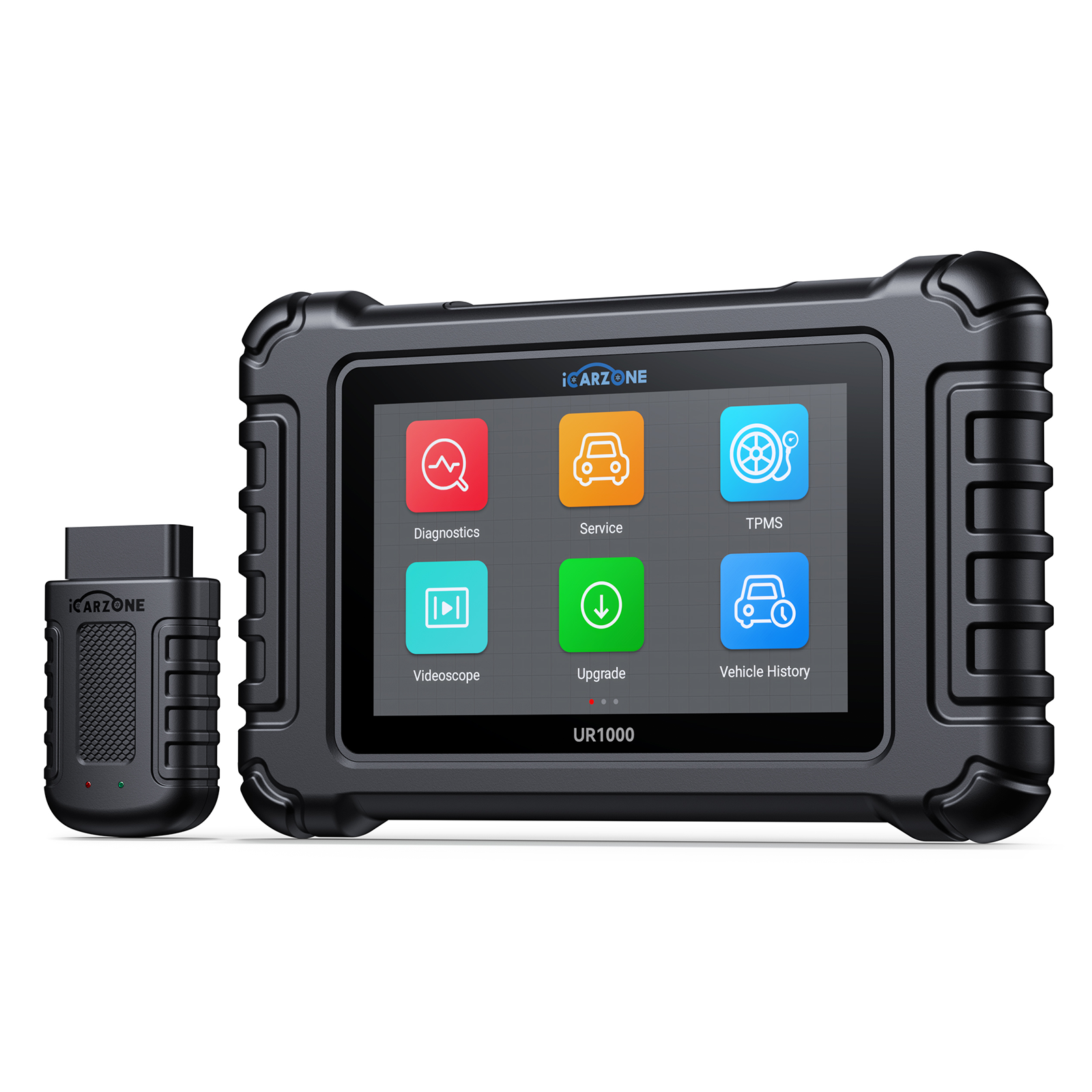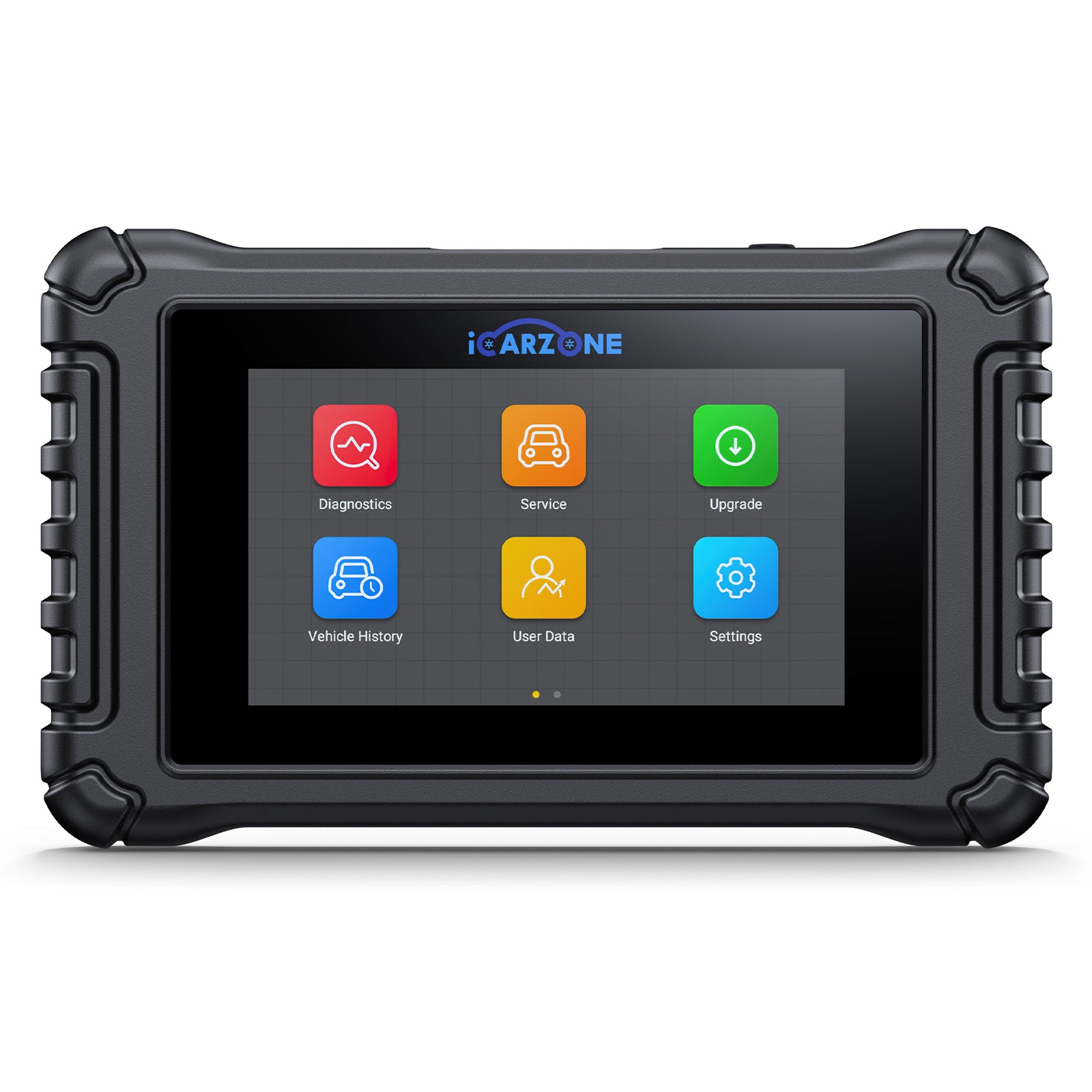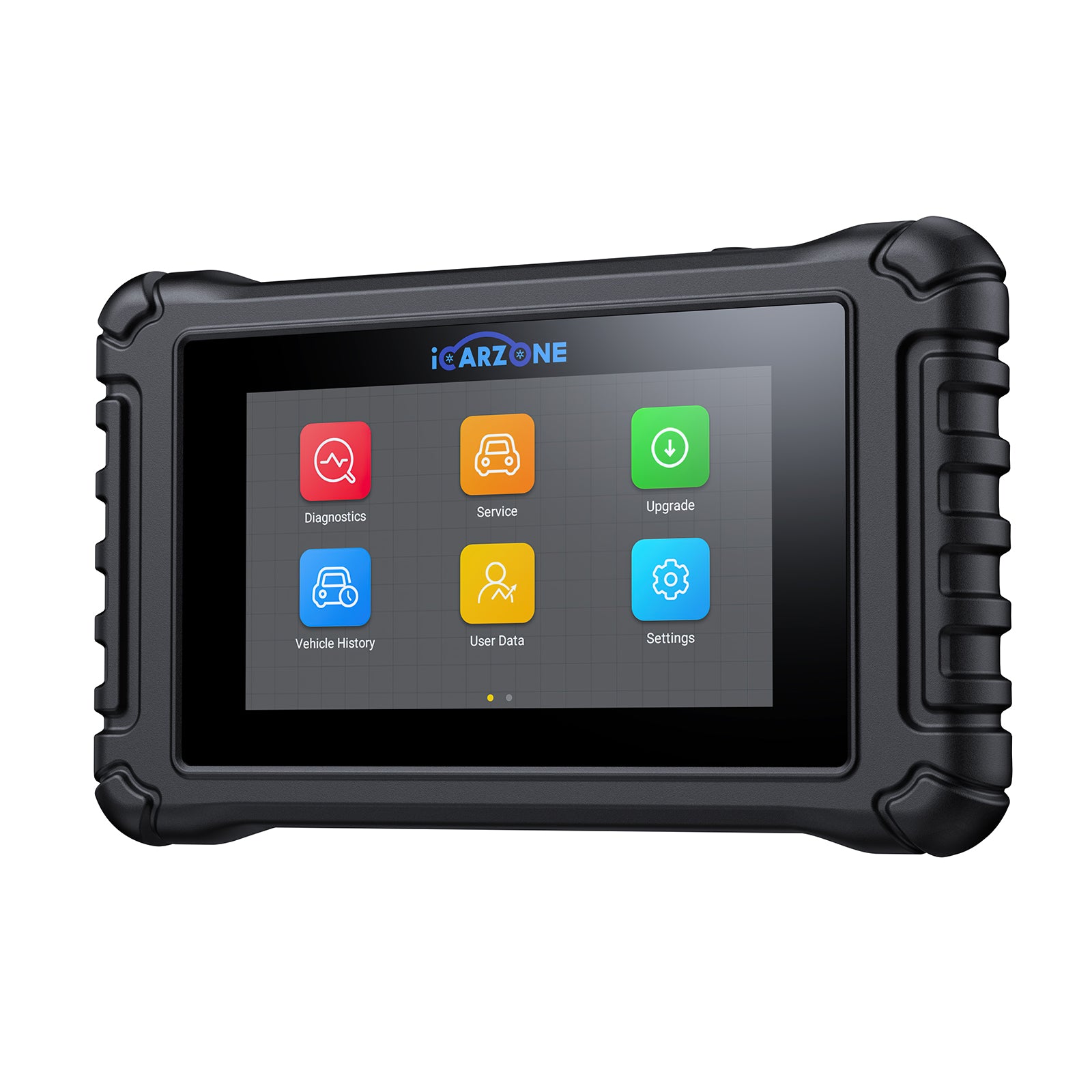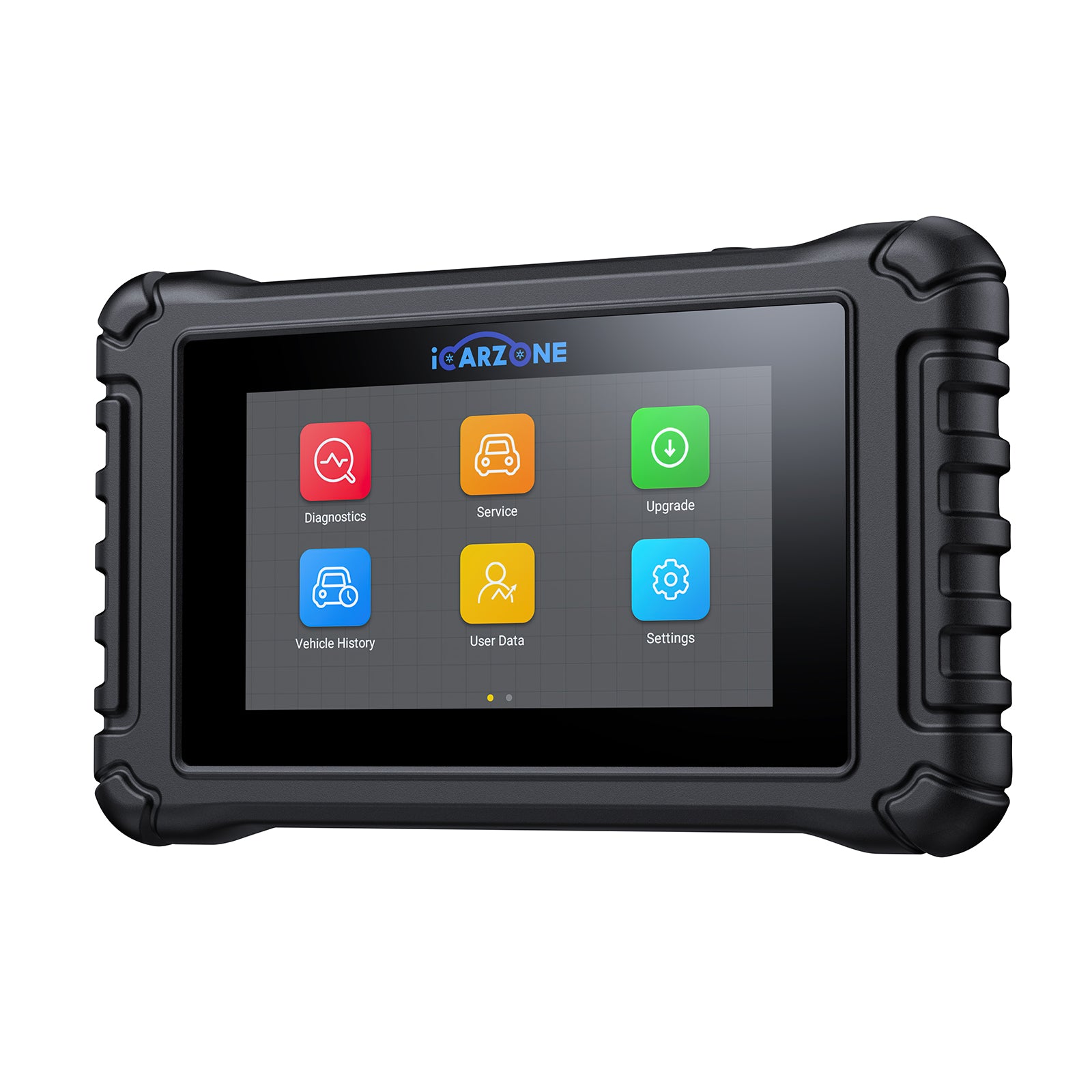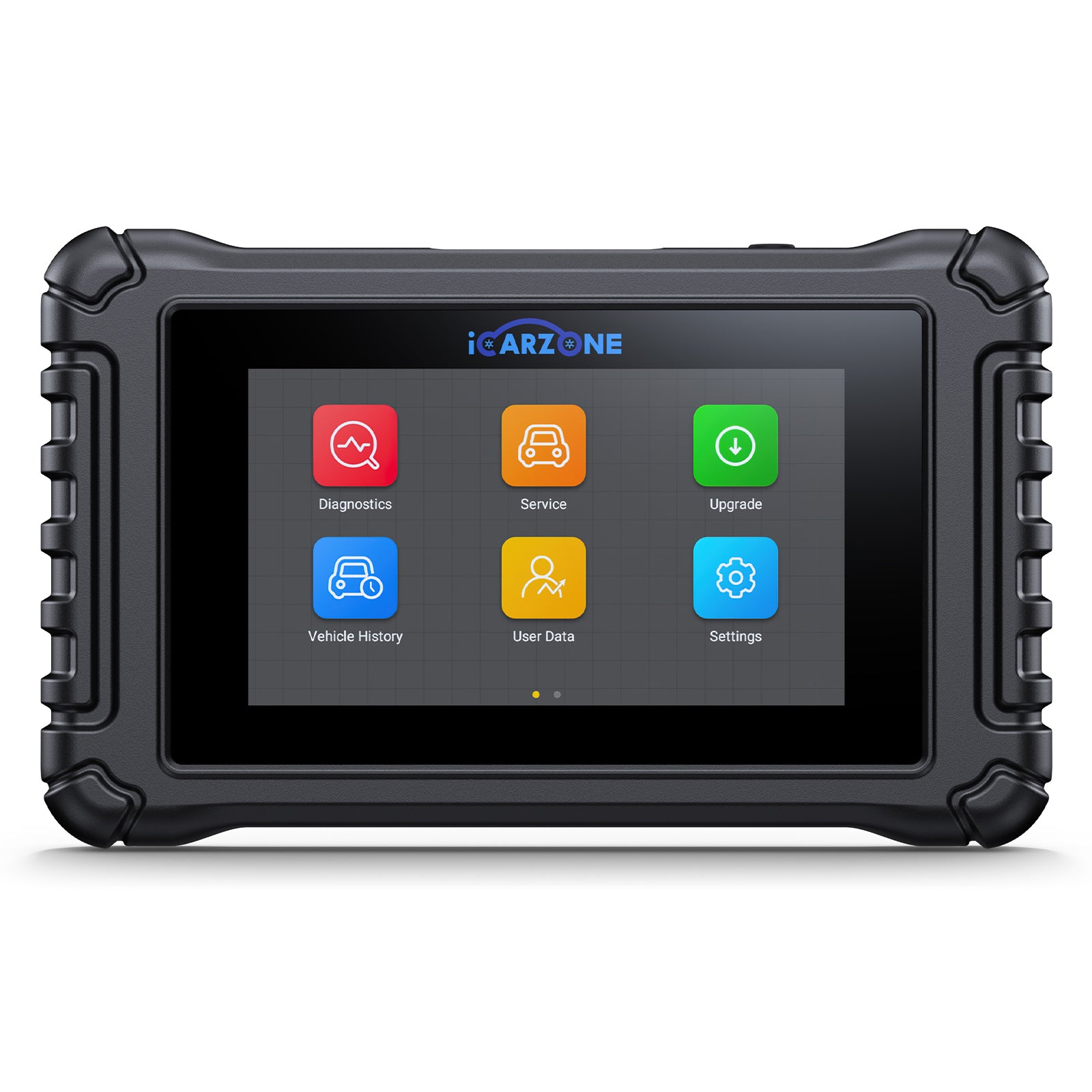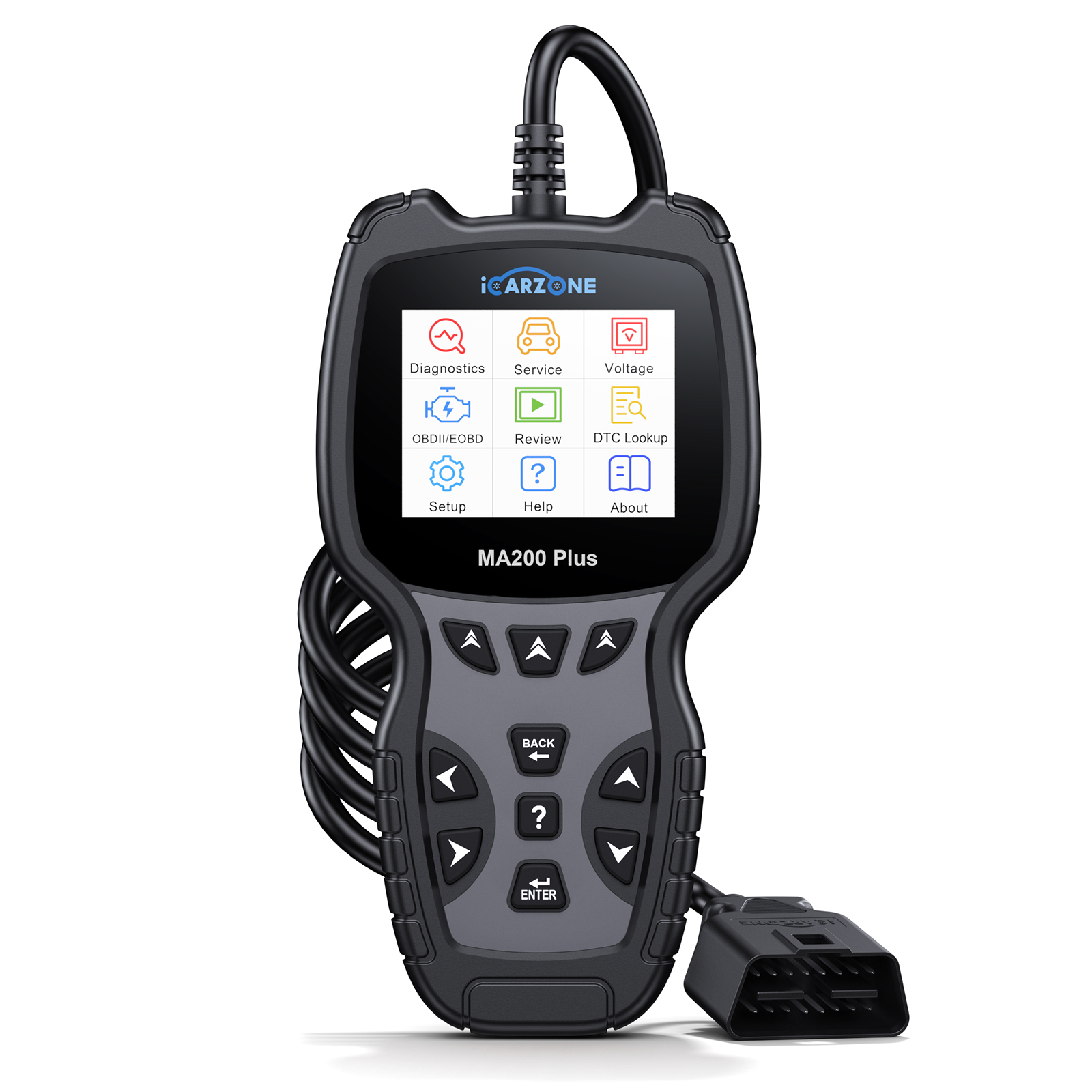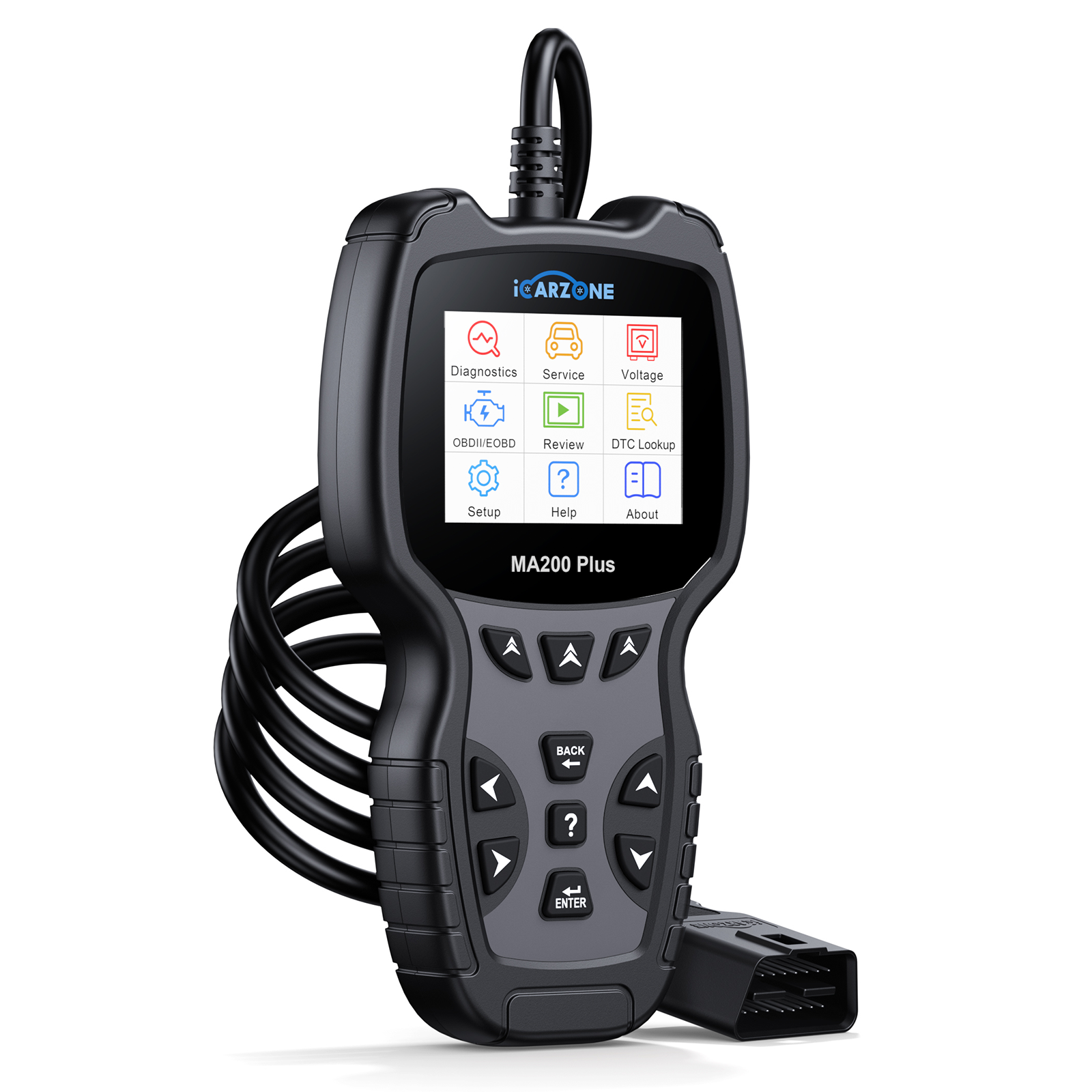P0175 Code in Honda Civic: Fix Bank 2 Rich Condition with ICARZONE MA900
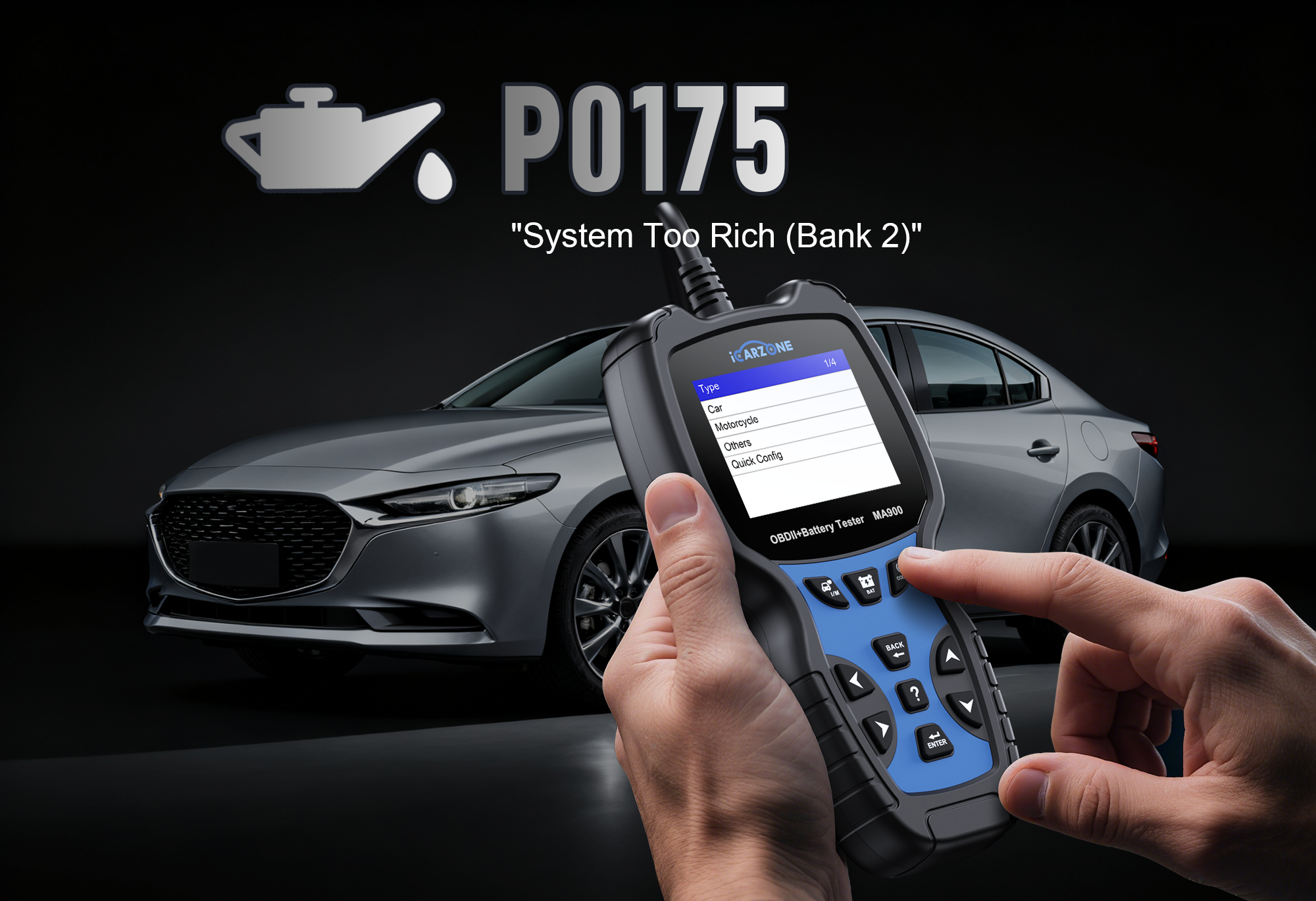
P0175 Code in Honda Civic: Fix with ICARZONE MA900
Solve Bank 2 Too Rich condition in 2016-2024 Civic 1.5L Turbo & 2.0L models. Diagnose fuel/air imbalance with MA900's Honda-specific tools.
Fix P0175 with MA900 Now1. What is P0175 in Honda Civic?
P0175 is an OBD-II Diagnostic Trouble Code indicating a Fuel System Too Rich (Bank 2) condition. In Honda Civic—one of America's most popular compact cars for over 40 years—this code means that the air-fuel mixture in Bank 2 of the engine contains too much fuel relative to air.
The Civic's Engine Control Unit (ECU) monitors fuel delivery through oxygen sensors and adjusts accordingly to maintain the ideal 14.7:1 air-fuel ratio. When this ratio drops below 12:1 (too much fuel), P0175 is triggered for Bank 2, which in Civic's inline-4 engines refers to the rear cylinder bank (cylinders 3 and 4 in 1.5L Turbo models).

Why P0175 Matters for Civic Owners
Honda engineered the Civic's fuel system for both efficiency and performance. A rich condition creates several critical issues:
- Significant fuel economy reduction—owners report 3-5 MPG drops in 1.5L Turbo models
- Increased emissions—fails California CARB standards and similar regulations
- Catalytic converter damage risk ($800-$1,500 replacement cost in Civic)
- Carbon buildup on intake valves (especially problematic in 1.5L Turbo engines)
- Oil contamination from unburned fuel diluting engine oil—accelerates wear
- Reduced engine performance and responsiveness during acceleration
2. Common Causes in 2016-2024 Honda Civic
Failing Fuel Pressure Regulator (2018 Civic EX-T 1.5L Turbo) — A 2018 EX-T owner with 58,000 miles experienced P0175 with rough idle. ICARZONE MA900's Fuel Pressure Test showed 65 psi (spec: 51-59 psi) on Bank 2. Honda's high-pressure regulators in early 1.5L Turbo engines are prone to sticking. Replacing with updated part #16400-5RA-A01 resolved the rich condition.Clogged Fuel Injectors (2020 Civic Sport 1.5L Turbo) — A 2020 Sport owner's P0175 appeared with hesitation during acceleration. MA900's Injector Balance Test confirmed irregular spray patterns in Bank 2 injectors. Inspection revealed carbon buildup—a known issue in direct injection engines. Professional ultrasonic cleaning restored proper fuel atomization.Oxygen Sensor Failure (2019 Civic LX 2.0L) — A 2019 LX owner's P0175 was accompanied by poor fuel economy. MA900's Oxygen Sensor Response Test showed Bank 2 downstream sensor (O2S22) was slow to respond. The 2.0L's zirconia sensors typically last 60,000-80,000 miles. Replacement with Denso 234-9119 sensor fixed the issue.PCV System Issues (2017 Civic Si 1.5L Turbo) — A 2017 Si owner with 72,000 miles developed P0175 after an oil change. MA900's Short and Long Term Fuel Trim Analysis showed -15% STFT on Bank 2. Inspection revealed a stuck PCV valve allowing oil vapors into intake—common in high-performance Civic trims. Replacing PCV valve (#17130-5AA-A00) resolved P0175.ECU Software Needs Update (2021 Civic Touring 1.5L Turbo) — A 2021 Touring owner experienced intermittent P0175. MA900's TSB Lookup identified Honda Service Bulletin 21-032, which addresses incorrect fuel mapping. Updating the ECU software eliminated the code.

3. Key Symptoms in Honda Civic Sedans/Hatches
Performance Symptoms
- Illuminated Check Engine Light with P0175 stored
- Decreased fuel economy (3-5 MPG reduction typical)
- Engine hesitation during acceleration
- Strong fuel odor from exhaust
- Black smoke from tailpipe during hard acceleration
Mechanical Symptoms
- Rough idle, especially when engine is cold
- Misfires under load (climbing hills, passing)
- Oil level increase (due to fuel dilution)
- Spark plug fouling (black, sooty deposits)
- Reduced turbo boost pressure (1.5L Turbo models)
4. Civic Engines/Trims Prone to P0175
Honda service data highlights these Civic configurations with highest P0175 incidence:
| Engine | Model Years | Civic Trims | % of P0175 Cases | Primary Risk Factor |
|---|---|---|---|---|
| 1.5L Turbocharged I4 | 2016–2021 | EX-T, EX-L, Touring | 47% | Fuel pressure regulator issues and direct injection carbon buildup |
| 1.5L Turbocharged I4 | 2022–2024 | EX, Touring, Si | 21% | Improved but still susceptible to injector clogging and sensor drift |
| 2.0L Naturally Aspirated I4 | 2016–2024 | LX, Sport, LX-P | 24% | Oxygen sensor failure and EVAP system influence on fuel trim |
| 1.5L Turbocharged I4 (High Output) | 2017–2024 | Si, Type R | 8% | Aggressive fuel mapping and PCV system issues under high load |
Critical TSBs for Civic P0175:
- Honda Service Bulletin 19-082 (2016–2019 1.5L Turbo): Fuel pressure regulator replacement and ECU update for rich condition.
- Honda Service Bulletin 21-032 (2020–2021 1.5L Turbo): ECU calibration update to resolve P0175 during cold starts.
- Honda Service Bulletin 22-047 (2022–2023 Civic): Revised oxygen sensor installation procedure for P0175 concerns.
5. Diagnostic Steps with ICARZONE MA900
Diagnosing P0175 in your Civic is precise with ICARZONE MA900's Honda-specific fuel system tools:
| Step | Action with MA900 | Civic-Specific Goal | Pass/Fail Criteria |
|---|---|---|---|
| 1 | Full System Scan > Select "Honda" > "Civic" > "Engine Control Module" | Confirm P0175 and check for related codes (P0172, P0171, P0174) | Pass: Isolated P0175 | Fail: Multiple bank rich/lean codes (system-wide issue) |
| 2 | Fuel System > "Fuel Trim Analysis" | Monitor Short Term Fuel Trim (STFT) and Long Term Fuel Trim (LTFT) for Bank 2 | Pass: STFT/LTFT within ±10% | Fail: Negative values below -10% (rich condition) |
| 3 | Sensor Tests > "Oxygen Sensor Response Test" |
|
Pass: 10-20 switches per second | Fail: Slow response or constant rich reading |
| 4 | Fuel System > "Fuel Pressure Test" | Measure and monitor fuel pressure at idle and under load | Pass: 51-59 psi (1.5L Turbo), 43-51 psi (2.0L) | Fail: Pressure outside specification |
| 5 | Service Functions > "Honda TSB Lookup" > Enter Civic's VIN | Check for applicable technical service bulletins | Pass: No relevant TSB | Fail: TSB applies (follow recommended fix) |
Case Example: A 2019 Civic EX-T 1.5L Turbo failed Step 2 (LTFT -18% on Bank 2) and Step 4 (fuel pressure 68 psi). MA900's Injector Pulse Width Analysis showed extended injection times for Bank 2. After replacing the fuel pressure regulator with updated part #16400-5RA-A01 and performing MA900's ECU Adaptation Reset, a 100-mile test drive showed STFT/LTFT within normal range (-2% to +3%) with no return of P0175.
6. Fixes for Civic's P0175
Resolving P0175 in your Civic requires fuel system-specific repairs—here's how to address each root cause with ICARZONE MA900 guidance:
1. Replace Fuel Pressure Regulator (1.5L Turbo)
- Ensure engine is cool and relieve fuel pressure using MA900's Fuel Pressure Relief function.
- Disconnect the negative battery terminal.
- Locate the fuel pressure regulator:
- 2016-2024 1.5L Turbo: Attached to high-pressure fuel pump on engine top
- Look for small cylindrical component with vacuum line and electrical connector
- Disconnect the vacuum hose and electrical connector.
- Use a 19mm wrench to loosen the regulator from the fuel pump assembly.
- Have a rag ready to catch any spilled fuel.
- Install new regulator with updated design:
- 2016-2019: #16400-5RA-A01 (replaces earlier problematic version)
- 2020-2024: #16400-5RA-A02
- Tighten to 18 ft-lbs (24 Nm) using torque wrench.
- Reconnect vacuum hose, electrical connector, and battery terminal.
- Use MA900's Fuel Pressure Verification to confirm pressure is within 51-59 psi range.
2. Clean or Replace Fuel Injectors
- For suspected clogging, first try MA900's Fuel Injector Cleaning service function with Honda-recommended cleaning solution.
- For confirmed failure, locate Bank 2 injectors (cylinders 3 and 4 on 1.5L Turbo):
- 1.5L Turbo: Rear two injectors on fuel rail
- 2.0L: Rear two injectors on fuel rail
- Relieve fuel pressure using MA900's service function.
- Disconnect fuel rail and electrical connectors.
- Remove and replace injectors with OEM parts:
- 1.5L Turbo: #16450-5LA-A01
- 2.0L: #16450-5AA-A01
- Replace O-rings with new ones from injector kit—lubricate with clean engine oil.
- Reassemble fuel system and torque fuel rail bolts to 18 ft-lbs.
- Perform MA900's Injector Balance Test to verify proper operation.
3. Replace Oxygen Sensors
- Identify Bank 2 sensors:
- Upstream (before catalytic converter): O2S21
- Downstream (after catalytic converter): O2S22
- Ensure engine is cool—allow at least 2 hours after operation.
- Locate sensors on exhaust manifold (upstream) and pipe (downstream).
- Disconnect electrical connector for identified sensor.
- Use oxygen sensor socket (22mm) to remove old sensor.
- Apply anti-seize compound to new sensor threads (avoiding sensor element).
- Install new OEM-compatible sensor:
- Upstream Bank 2: Denso 234-9118 or Honda #36532-5LA-A01
- Downstream Bank 2: Denso 234-9119 or Honda #36532-5LA-A02
- Tighten to 33 ft-lbs (45 Nm) using torque wrench.
- Reconnect electrical connector.
- Use MA900's Oxygen Sensor Response Test to verify proper operation.
4. Update ECU Software
- Connect MA900 to Civic's OBD-II port (under dashboard, driver's side).
- Select "Honda" > "Civic" > "ECM/PCM" > "Software Update".
- MA900 will automatically detect applicable updates for your VIN.
- If Service Bulletin 19-082, 21-032, or similar update appears, select "Install Update".
- Ensure battery is fully charged (12.6V or higher) during the 30-45 minute update.
- Do not turn off ignition or disconnect MA900 during update process.
- After completion, run MA900's Fuel Trim Monitor during a test drive to confirm fix.
7. Repair Costs & Maintenance Tips
- DIY Diagnosis with MA900: $0 (avoids $120–$160 dealer diagnostic fee)
- OEM Fuel Pressure Regulator: $85–$125 (1.5L Turbo)
- Fuel Injectors (set of 2 for Bank 2): $150–$220 (OEM)
- Oxygen Sensor (Bank 2): $75–$110 (upstream), $65–$95 (downstream)
- Fuel Injector Cleaning Service: $90–$140 (professional) or $20 (DIY kit)
- Professional Regulator Replacement: $280–$380 (parts + 1.5 hours labor)
- ECU Software Update: $150–$190 at dealer (free with MA900 for DIYers)
- Catalytic Converter Replacement (if damaged): $800–$1,500 (Civic has two-way system)
Maintenance Tips for Civic Owners
- Use only Top Tier detergent gasoline with 87 octane or higher—Honda explicitly recommends this for 1.5L Turbo engines.
- Add fuel system cleaner every 10,000 miles—Honda recommends their OEM fuel system cleaner #08773-99930.
- Change engine oil more frequently if P0175 occurs:
- Normal use: Every 7,500 miles instead of 10,000
- Severe use: Every 5,000 miles
- Inspect PCV valve at 60,000 miles—replace if sticky or clogged (1.5L Turbo models).
- For 2016-2019 1.5L Turbo models, proactively replace fuel pressure regulator at 80,000 miles.
- Check for ECU updates quarterly using MA900—Honda releases fuel mapping updates regularly.
8. Preventive Maintenance for Civic
Avoid P0175 in your Civic with these proactive steps, based on Honda engineering recommendations:
-
Fuel System Maintenance:
- Use only Top Tier gasoline—Honda's fuel system is calibrated for these fuels
- Add Honda fuel system cleaner every 10,000 miles
- Replace fuel filter at 100,000 miles (in-tank filter requires professional service)
- Avoid letting fuel level drop below 1/4 tank regularly
-
Sensor Maintenance:
- Inspect oxygen sensors at 60,000 miles using MA900's response test
- Clean MAF sensor annually with proper MAF cleaner (not carb cleaner)
- Check for loose connections at O2 sensor connectors during oil changes
-
Engine Oil Care:
- Use only 0W-20 full synthetic oil meeting Honda's HTO-06 standard
- Change oil every 7,500 miles to prevent fuel dilution issues
- Check oil level monthly—top off if needed to prevent PCV system issues
-
Software Maintenance:
- Check for ECU updates every 6 months using MA900
- Immediately install updates related to fuel delivery or fuel trim
9. Civic-Specific FAQs
Short-term driving is possible but not recommended. Extended operation causes fuel dilution of oil, catalytic converter damage, and reduced fuel economy—repair promptly.
These models have a fuel pressure regulator prone to sticking in the open position, increasing fuel pressure. Honda addressed this with updated part #16400-5RA-A01 in later production.
Yes—MA900 fully supports 2024 Civic models, including the 11th generation's updated 1.5L Turbo and 2.0L engines with specific Honda fuel system diagnostic protocols.
It may if caused by minor injector clogging. Use MA900's Injector Balance Test before and after treatment to verify improvement. Severe cases require replacement.
Cold climates exacerbate P0175 as ECU enrichens mixture for cold starts. Humid environments can cause oxygen sensor issues. 1.5L Turbos in northern states show higher incidence.
Rarely—restricted air flow typically causes lean conditions (P0171/P0174). However, a severely clogged filter combined with other issues can contribute to rich conditions in some cases.
10. Summary
P0175 (Fuel System Too Rich - Bank 2) is a common issue in 2016-2024 Honda Civic models, particularly affecting 1.5L Turbo engines. Caused by fuel pressure regulator failure, clogged injectors, oxygen sensor issues, or ECU software problems, P0175 leads to reduced fuel economy, increased emissions, and potential catalytic converter damage if ignored.
The ICARZONE MA900 simplifies Civic-specific diagnosis with tools like fuel trim analysis, pressure testing, and Honda TSB lookup. Most P0175 cases are resolved with regulator replacement, injector cleaning, or software updates—avoiding expensive dealer visits. By following preventive maintenance steps (e.g., using Top Tier fuel and regular oil changes), Civic owners can maintain optimal fuel system performance and prevent P0175 issues.
Fix P0175 in Your Honda Civic with ICARZONE MA900
MA900 includes Civic-specific fuel system tests, pressure diagnostics, and Honda TSB updates—perfect for 1.5L Turbo and 2.0L models. Diagnose and repair your vehicle with professional-grade tools.
Get MA900 for Your Civic Today© 2025 iCarzone. All rights reserved.


